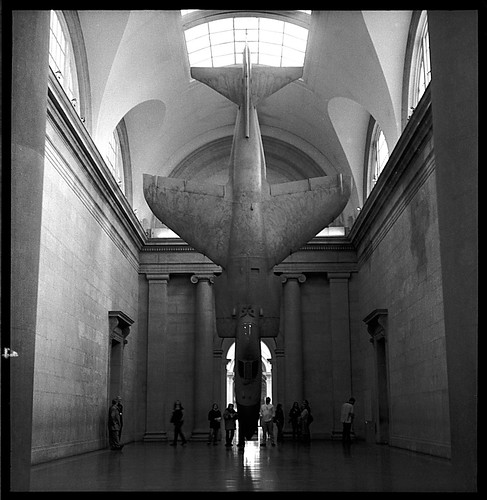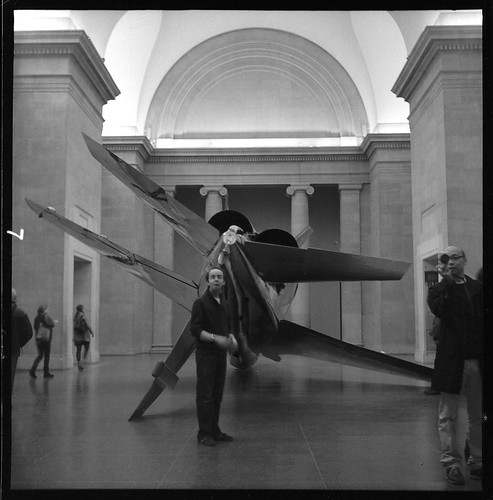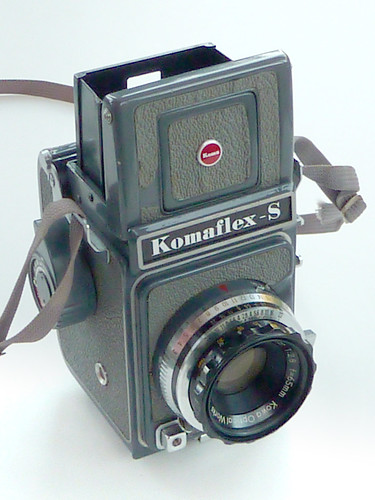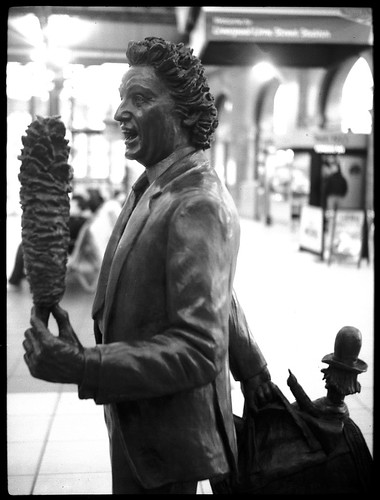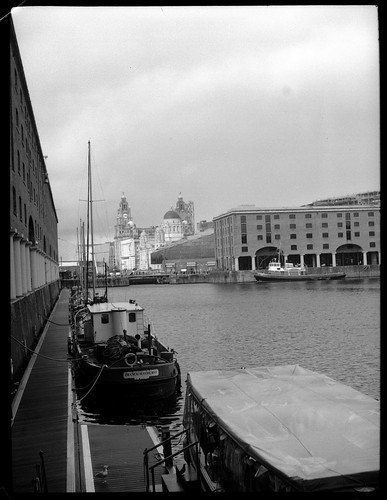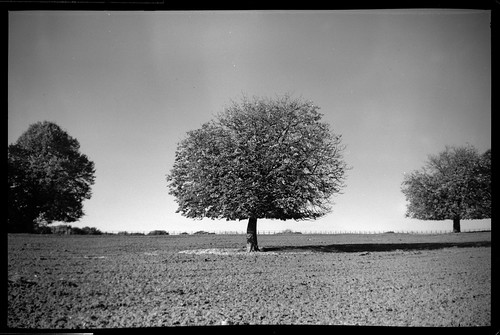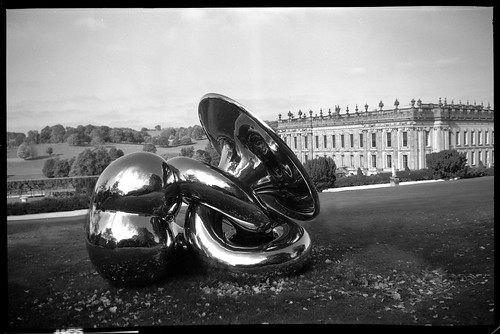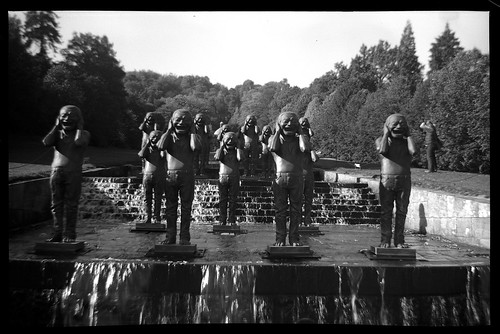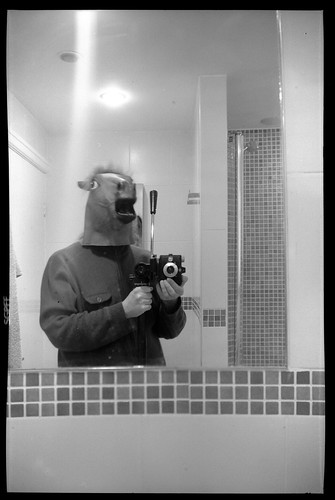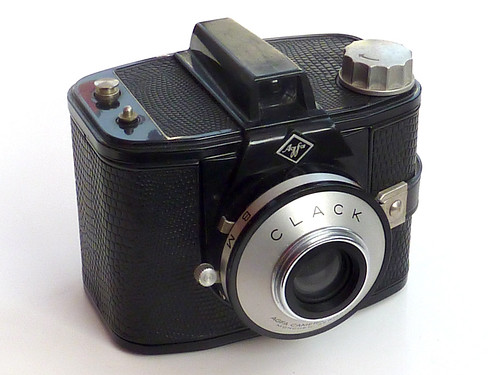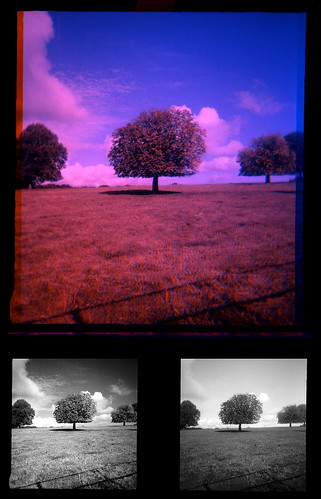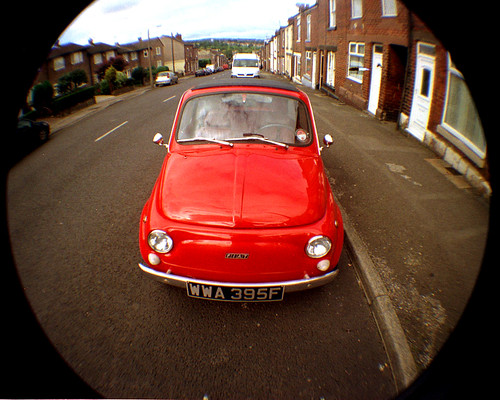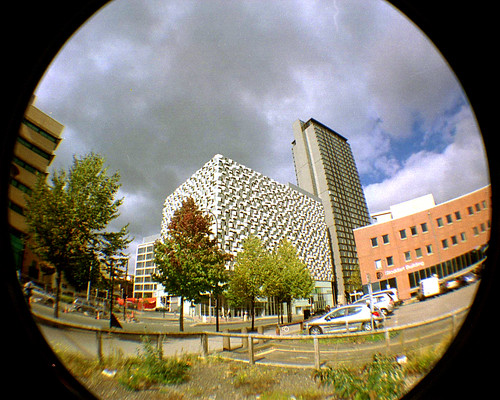Sunday 31 October 2010
photo from week 43 - Komaflex-S
photo from week 43 - Komaflex-S
photo from week 43 - Komaflex-S
Saturday 30 October 2010
Week 44 - Minolta Dynax 5
This is a class of camera that I have never owned or used before, coming right at the end of the era of popular highly flexible film cameras, soon to be replaced by digital.
As well as being "auto-everything" is is extensively customisable and can be used fully manually.
I've loaded it with an ISO400 colour negative film, and, weather permitting, will take it to "Fright Night" tomorrow.
Saturday 23 October 2010
Week 43 - Komaflex-S
This is one of the few 127 rollfilm SLRs ever made. They were first manufactured in 1960 and produce twelve 4cm x 4cm photos on a roll. If used with reversal film, they could be mounted as "superslides", which could be projected in a 35mm projector, but had a larger (40mm x 40mm compared with 24mm x 36mm) picture area.
This model has a reputation for unreliability, partly because the wind on and cocking mechanisms are far from intuitive, and without a manual, there is little hope of getting it right, and every chance of damaging the camera! This example seems to be in working order, but this will be the first film I have put through it.
photo from week 42 - Super Ikonta
Statue of Ken Dodd with his tickling stick and a diddy-man. This was hand held at 1/10th second at full aperture, taken at Liverpool Lime Street station.
photo from week 42 - Super Ikonta
An art installation at the Lverpool Biennial, the camera was placed on a window sill for this 1 second exposure at f8
photo from week 42 - Super Ikonta

reflected self portrait with Zeiss Super Ikonta and battered straw hat, originally uploaded by pho-Tony.
This week's mirror portrait, as always the light levels are low, and this was slightly underexposed at 1/25th second at full aperture, a compromise between getting the correct exposure while avoiding camera shake (or using a tripod)
Saturday 16 October 2010
Week 42 - Zeiss Super Ikonta
I plan to take it to Liverpool on Tuesday.
photo from week 41 - Agfa Clack
photo from week 41 - Agfa Clack
Thursday 14 October 2010
photo from week 41 - Agfa Clack
photo from week 41 - Agfa Clack
photo from week 41 - Agfa Clack
I had to find a tripod for this exposure, which was around 12 seconds. I came across the horse mask while I was searching for it.
Saturday 9 October 2010
Week 41 - Agfa Clack
I was planning to start using it today, but it has been so grey and overcast that I will leave it in the hope that there is better weather later in the week.
Friday 8 October 2010
photo from week 40 - ISO Duplex 120
Another example of the bichrome technique in which a colour image is generated from black and white negatives shot through coloured filters.
photo from week 40 - ISO Duplex 120
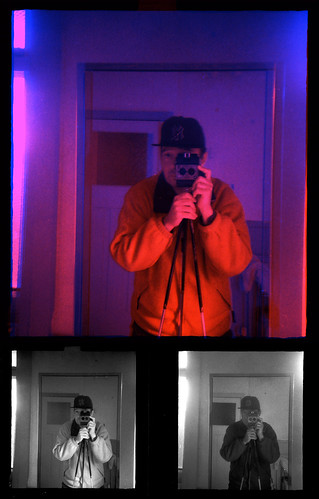
reflected self portrait with ISO Duplex 120 camera - bichrome process, originally uploaded by pho-Tony.
Reflected self-portrait using the bichrome process
photo from week 40 - ISO Duplex 120
photo from week 40 - ISO Duplex 120
photo from week 40 - ISO Duplex 120
photo from week 40 - ISO Duplex 120
This is a stereo pair of the Red House pub..
Friday 1 October 2010
photo from week 39 - Lomo Fisheye camera

reflected self-portrait with Lomo Fisheye camera and top half of baseball cap washing frame, originally uploaded by pho-Tony.
